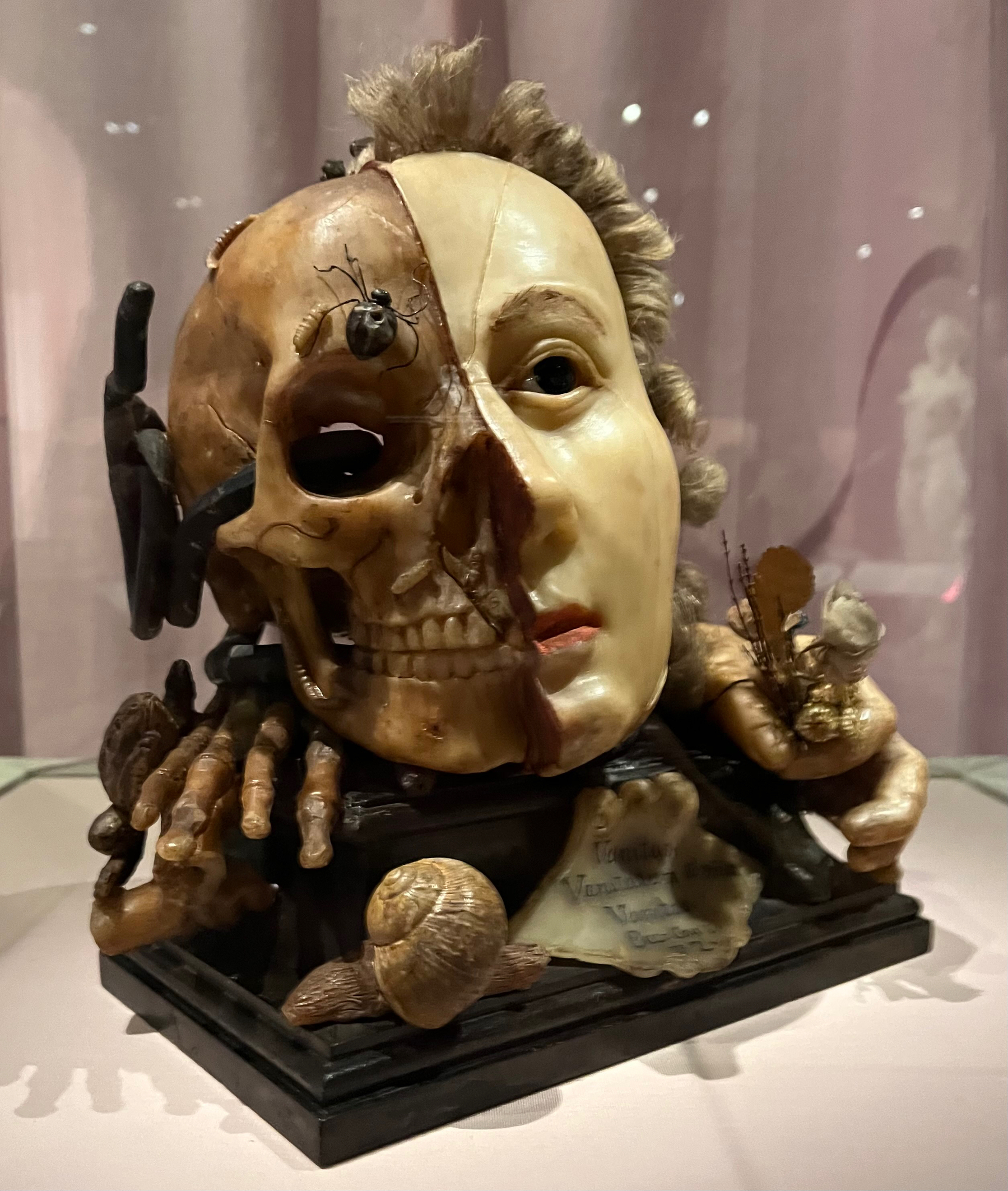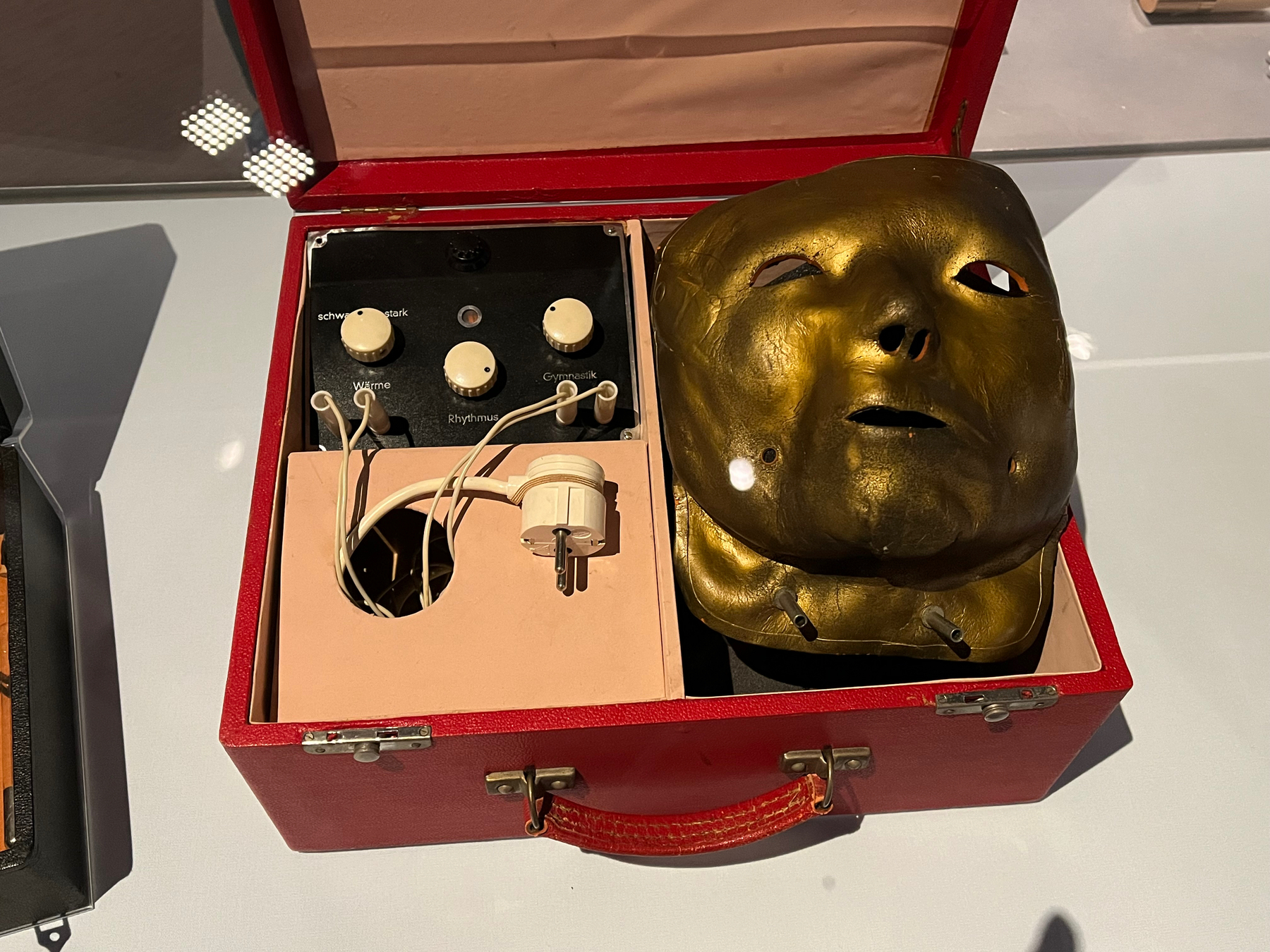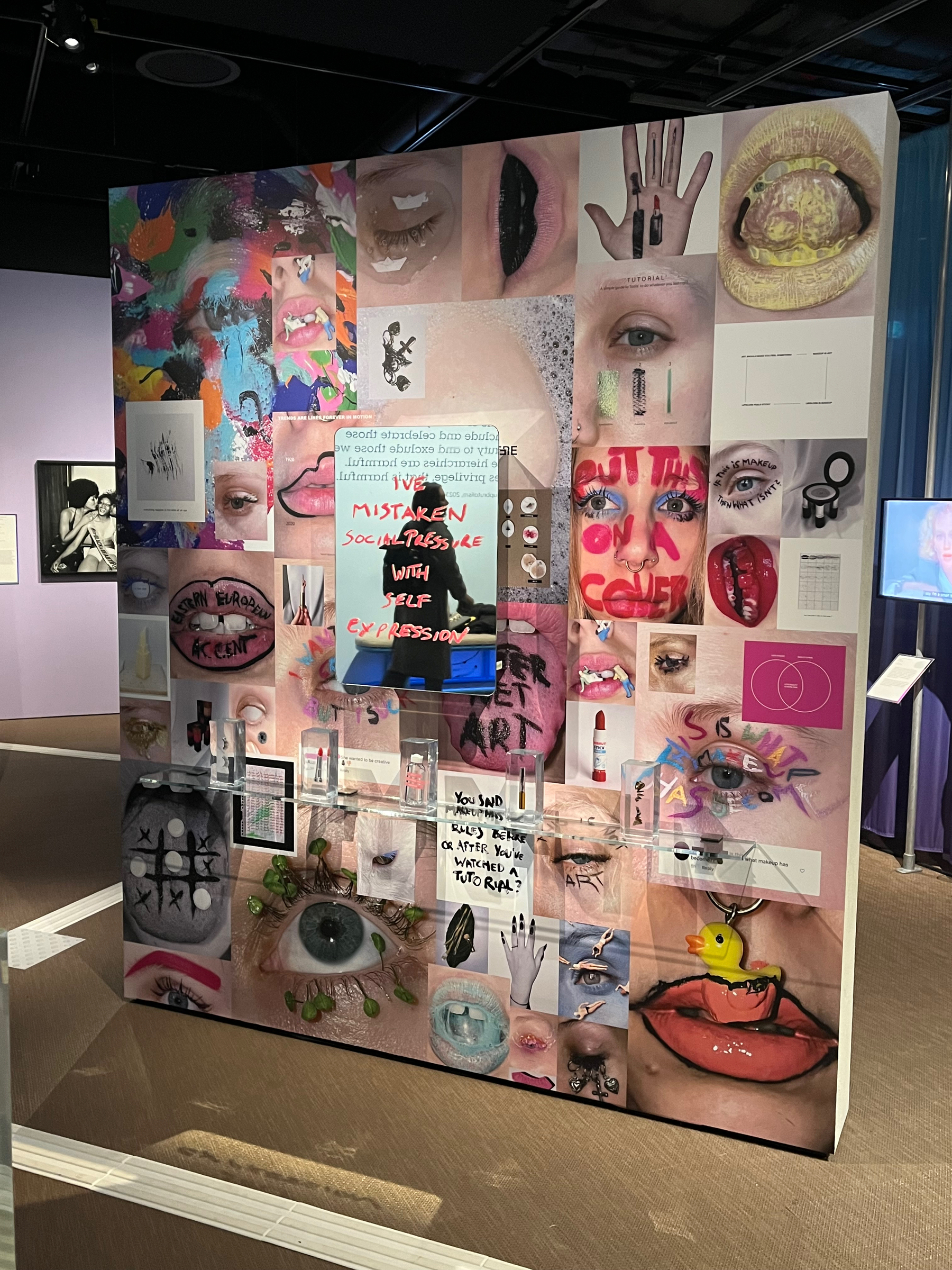A few exhibits below that caught my eye from a recent trip to the Wellcome Collection’s current exhibition “The Cult of Beauty”.
Our major new exhibition explores notions of beauty across time and cultures.
Around the world, beauty is constantly seen as an ideal worthy of going to great lengths to achieve. But what are the driving forces that lead us to believe in a myth of universal beauty, despite its evolving nature?
First up, a “Vanitas” head. This one is a wax carving, representing life and death. In general, Vanitas as an art genre refers to artworks that are designed to symbolise “the inevitability of death and the transience and vanity of earthly achievements and pleasures”
This creepy looking thing is a “beauty mask”. A century ago, women might wear these to supposedly remove wrinkles and blemishes from their face. Modern-day versions of something similar exist today, see for example the £2000 “Cellreturn Platinum LED Mask”. This is definitely not a personal recommendation.
A 2 metre+ high collage created by Eszter Magyar who runs the Instagram account “makeupbrutalism”, called “It makes no sense to be beautiful if no one is ugly”. The photos are closeups of herself, covered with various types of makeup.
Finally for now, “The Black Morphew”. This is actually two photos I pasted together. The left one is what the sculpture looks like to the human eye. But if you take a photo with your flash enabled, the result is something very different; the right hand version.
It’s named after a skin lotion made of Pelican gall bladders and wine (yum?) that was supposed to make dark scars turn silver.



